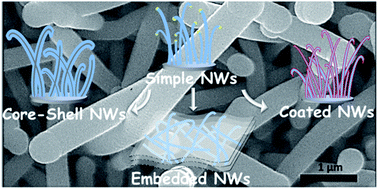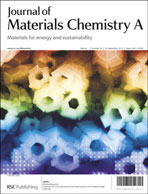After more than 20 years of steady progress, lithium-ion batteries still exhibit modest energy capacities that seem to have reached their asymptotic values with the present combination of graphite at the anode and insertion oxide or phosphate materials at the cathode. New applications, particularly for all-electric vehicles are pushing the development of electrode materials with higher Li storage capabilities, for both electrodes. Silicon, which exhibits the highest known Li-alloying capacity is one of the most promising anode materials. However, Li alloying with Si is accompanied by a large volume change which induces cracking and rapid pulverization of Si-based anodes. Significant improvements in the anode's lifetime as well as charge–discharge rates have been obtained over the past few years by employing Si nanostructures, particularly nanowires. In this paper, we present the main synthesis methods for Si nanowires as well as the alloying properties of Li with Si and review how the use of Si-based nanowires has evolved, thanks to sophisticated material/structure combinations, including core–shell nanowires, composites as well as hollowed nanotube-like approaches.

You have access to this article
 Please wait while we load your content...
Something went wrong. Try again?
Please wait while we load your content...
Something went wrong. Try again?


 Please wait while we load your content...
Please wait while we load your content...